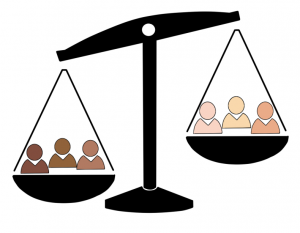Affirmative action is revisited by Congress

In 1996, the citizens of California voted to ban affirmative action in public hiring and contracting, including the prestigious University of California and California State University systems’ admissions under its ban. This legislation, known as Proposition 209, put to rest the heated debate between those who favored the use of race and ethnicity as a factor in public university admissions decisions and those who rejected it.
This controversial subject has again been brought to the public’s attention. The Senate recently passed a constitutional amendment that would remove the bans that Proposition 209 placed on public universities regarding affirmative action. Constituents will vote on whether or not to pass this bill in California in November. Affirmative action has both merits and pitfalls, neither of which can be ignored, but should rather be placed in context.
“Historically, there was no way that African Americans would have equal opportunities so affirmative action did a lot of good,” AP Calculus teacher Christian Kim said. “It leveled the playing field to a certain extent.”
Affirmative action, while it was first used with good intentions, will negatively affect the college admissions chances of many students on our campus. Because affirmative action works to give greater opportunities to underrepresented minorities, such as Hispanics and African Americans, the chances of a person representing a majority college-attending population, whether it be Caucasians or Asians, automatically go down. To those on the other side of the equation, however, affirmative action deprives them of the rewards that they have worked so hard to earn.
Ultimately, this process of “reverse” racism must be amended in order to avoid unnecessary benefits to those who don’t need it or fit the requirements.
“While minorities do benefit greatly from affirmative action, there are also many more qualified candidates who have an opportunity to attend a university taken from them,” senior Amanda Bui said.
The biggest flaw of affirmative action is that it assumes that those members of underrepresented minorities are also underprivileged while those members of majorities are over privileged. One look at Peninsula High School is enough to prove that assumption wrong.
“If you try to help out ‘oppressed minorities’ based on ethnicity alone, there are some ‘oppressed minorities’ that are from affluent areas whose parents are doctors or engineers who benefit from this action,” Kim said. “Conversely, there are some people in urban settings who are not oppressed minorities who suffer from this because they are poor and living in the ghettos and still get discriminated against.”
Although affirmative action has unwanted negative effects on hardworking students, its goal is still noble and deserves to fought for. Instead of calling for affirmative action, the government should allow public schools to accept some students on the basis of low income or a difficult background that show the potential to succeed.
“I do believe in giving assistance and providing equal opportunities, but these days it has to be on a more socioeconomic basis,” Kim said. “Skin color alone is no longer a valid judgment for whether or not a student is underprivileged.”
The new legislation, which will be voted on in California in November, could potentially change the demographics of California public schools.


search
Nice post. I was checking continuously this weblog and I am
inspired! Very helpful info specifically the
remaining part 🙂 I take care of such info a lot. I was looking
for this particular information for a long time.
Thanks and good luck.